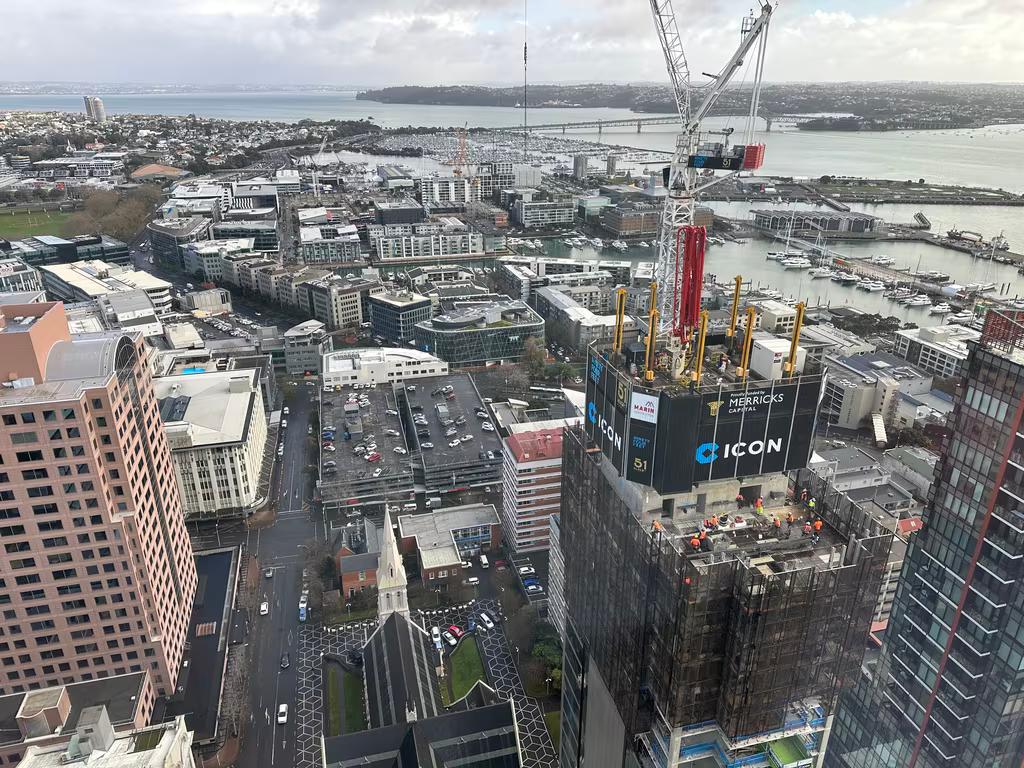
Rapid cost escalation makes for difficult choices
A high and more persistent inflationary environment continues to cause challenges across the economy, although a moderation in the pace of cost increases has thankfully begun. It’s still challenging to celebrate current pricing trends – they’re not as frantic as previously, but equally they’re not back to normal either.
Yet the cumulative build-up of higher prices over the last couple of years has fundamentally changed the levels of investment able to be undertaken in the next few years. Previous plans for infrastructure, building, and business investments are now generally superseded by revised higher costs. Infometrics analysis shows that general capital costs are now 18% higher than would have been imagined back in 2019/20.
A considerable acceleration in cost trends
Before 2021, the largest annual increase in capital items (measured by the Stats NZ Capital Goods Price Index, CGPI) was 4.9%pa, recorded in the March 2009 quarter. The most recent couple of years has blown that increase out of the water, with a 12.5%pa annual increase recorded in the June 2022 quarter. In June 2023, the CGPI was up 6.4%pa, the slowest increase in two years, but again above the highest pace seen in the 30 years prior.
The cumulative increases in prices over the last two years has seen a considerable rise in the overall cost base for capital projects. Taking a trend increase of 1.9%pa for the CGPI (the annual growth rate before inflation started to increase rapidly), the CGPI would have increased by 6.0% between March 2020 and June 2023. Instead, the actual increase was more than 25%. Overall, our estimates suggest that capital goods prices are currently 18% above trend levels (see Chart 1).
Looking at various capital components, civil works (infrastructure) costs have the largest gap. Over 2020 civil costs were flat to declining, but have since rapidly increased. The gap between actual inflation and previous trend inflation is around 26% for civil infrastructure prices (see Chart 2).
CGPI data goes back to 1989, with some other, more detailed series going back further to 1979. One such index is the “Transport Ways” index, which examines road and other transport infrastructure capital costs. Recent cost escalation for transport ways peaked at 19.1%pa at the end of 2022, the largest annual increase since 1982!
Even more detailed data from Stats NZ shows that bridge construction has had the largest increase in cost since 2020, with a 39% increase between the March 2020 and June 2023 quarters. Other increases have been large too (but don’t account for as much work), including a 41% increase in electricity transmission lines construction costs, a 38% increase in telephone and internet construction costs, and a 30% increase in urban drainage and sewerage systems construction costs.
Construction materials, fuels and chemicals, and food up the most
Although the CGPI looks at purely capital costs for new physical assets, the Producers Price Index (PPI) looks at the price that producers pay for their inputs or receive for their outputs. For simplicity, we’ll concentrate on input costs. PPI inputs include both the increase for new physical assets but also ongoing maintenance and services costs.
Stats NZ reports on 105 input commodities (both goods and services), which show a considerable disaggregation of various price trends for different businesses. Compared to March 2020 levels, the items with the largest increase in input costs have been construction materials, fuels and chemicals, and food and related items.
The single largest increase was for fertiliser prices, which are sitting 77% higher in June 2023 than in March 2020. Fertiliser prices are actually down 21% from peak prices at the end of 2022 but remain highly elevated.
Fuel products are also considerably more expensive, with other fuels (like aviation fuel) sitting 62% higher than in 2020, and diesel up nearly 48% over the same period.
A number of construction materials have seen considerable and sustained cost increases, including wood panelling and plastics (both up 40%pa), with metal components, concrete, and aggregates costs all up between 24-31%.
Services costs have already increased substantially, with water services costs up nearly 43%, site preparation up 27%, and civil engineering up 26%.
Deciding what to keep, and what to defer
Taken together, the various increases across the board when it comes to input costs means that the funds previously allocated for future projects in previous planning rounds won’t stretch as far today. The 18% gap in current capital costs compared to expectations in 2020 will necessarily limit project choices in the future.
Businesses, local government, and other organisations will increasingly need to undertake the difficult but important task of determining the prioritisation of projects wanting to be delivered within a smaller deliverable envelope. With nearly a fifth of the volume of work potentially now needing to pay for cost escalation over and above what was previously considered, not everything that was planned will be able to be completed on the same timeframes, or the same budgets.
Sequencing of work provides one way of providing the same projects are previously expected, but over a longer timeframe as funds become available. But at some point it seems likely that some projects will need to be re-evaluated for if current costs now exceed likely benefits, or if the project package needs to be reconsidered and made smaller, less costly, or not proceed at all.
Cost escalation forecasts available
Infometrics has in recent years undertaken a number of forecasts for public and private sector clients on cost escalation, including specific forecasts on construction costs, infrastructure costs, and local government costs. For more details, please visit https://www.infometrics.co.nz/product/cost-escalation-forecasts



















